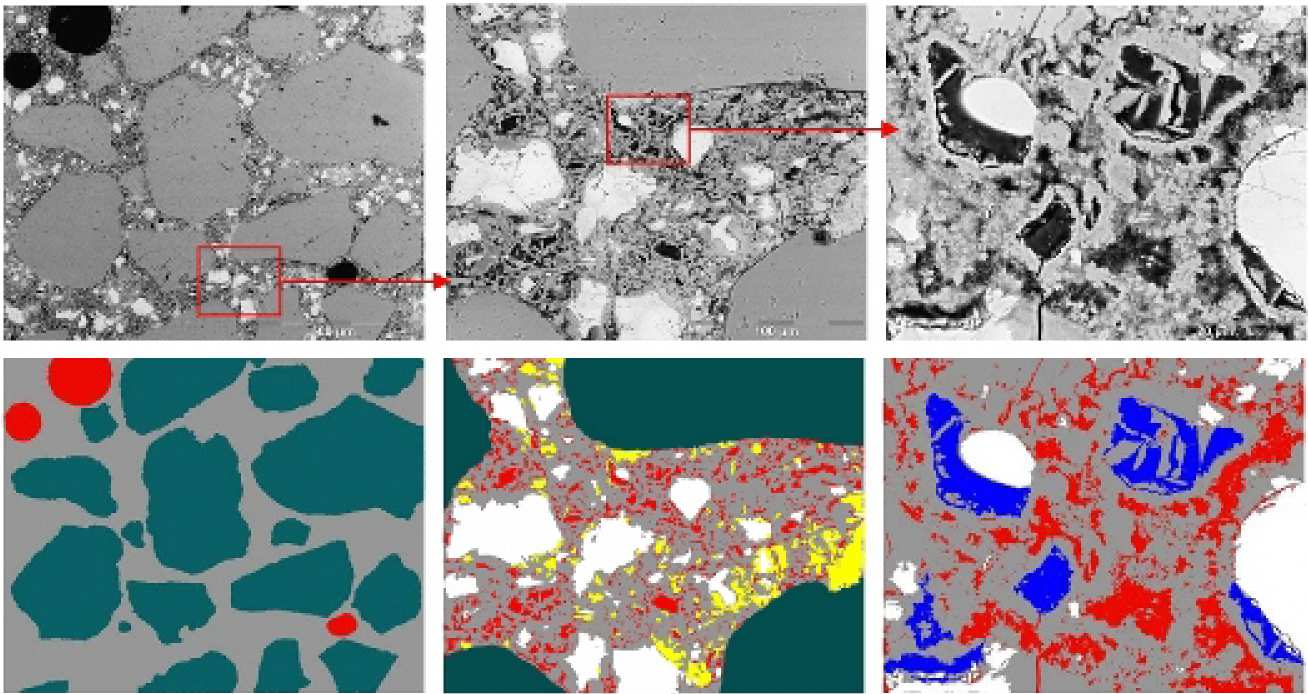All of the commonly occurring deterioration processes affecting concrete structures are controlled by the penetration of water and aggressive agents via pores and microcracks inherent in the microstructure. This EPSRC funded project aimed at understanding how the microstructure of concrete controls penetration of water and aggressive agents to develop models for transport properties.
Concrete microstructure was quantified using a multi-scale approach combining optical, field emission electron and 3D laser scanning confocal microscopy, giving global information (volume fraction, specific surface), morphology (shape), topology (tortuosity, connectivity, constrictivity) and spatial variability. A range of samples were tested to establish the effect of different ingredients, proportions, processing and exposure history on the microstructure.
Transport properties were measured on parallel samples and correlated to the microstructure, to identify the influence and relative contribution of different types and sizes of pore, microcrack and other phases. A multi-scale model of the microstructure was reconstructed using data from microscopy and models for predicting transport properties were developed from classical transport theories, effective medium approximation and flow simulation using network models. This will facilitate future development of more durable materials and more reliable service life prediction models and will also be relevant to the storage of radioactive waste.

Contact us
Prof Nick Buenfeld
Tel: +44 (0)20 7594 5955
E-Mail: n.buenfeld@imperial.ac.uk